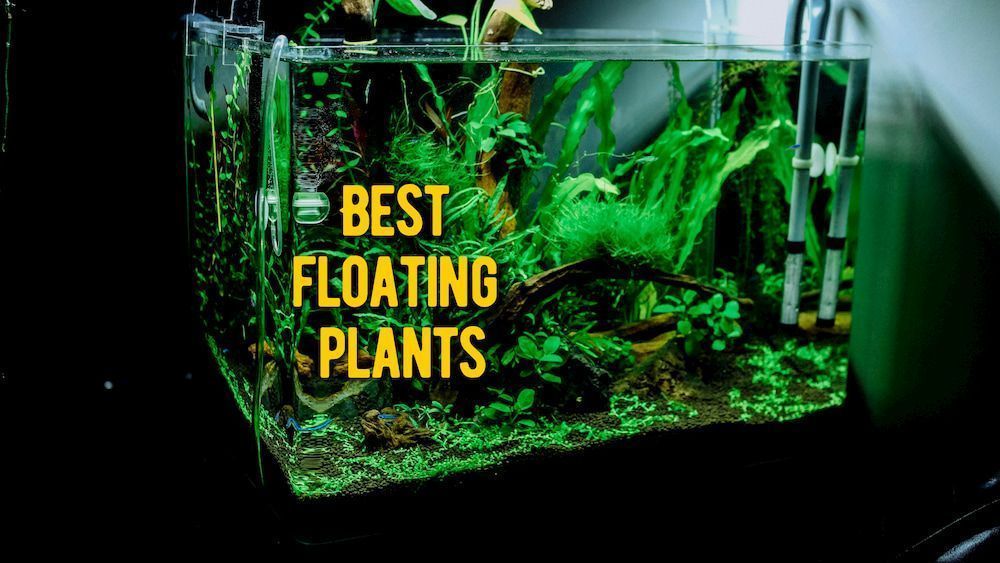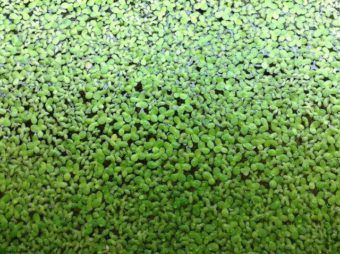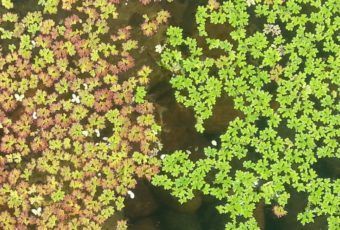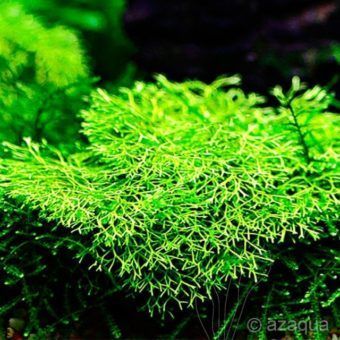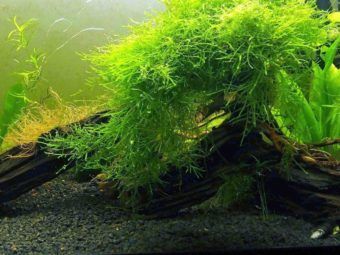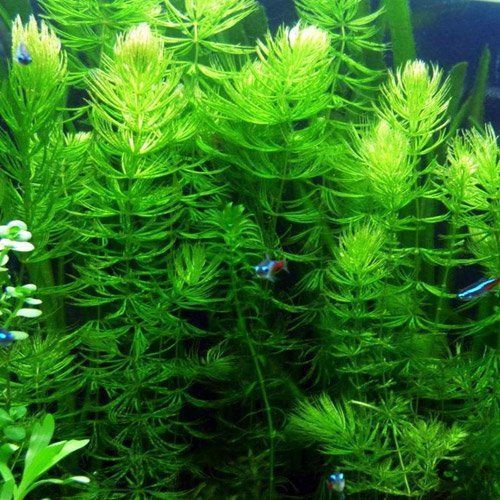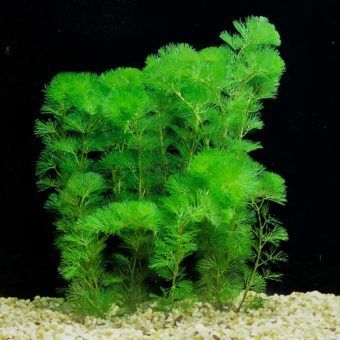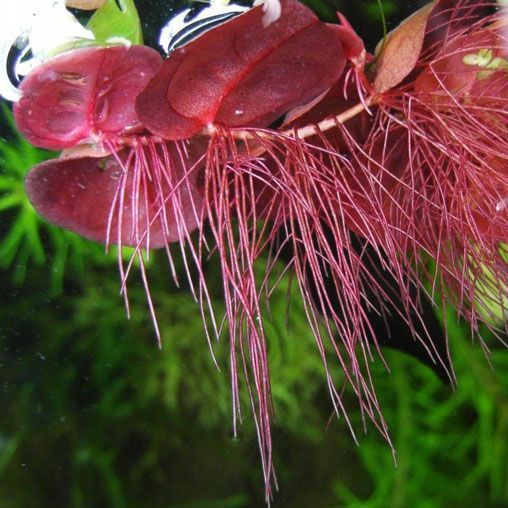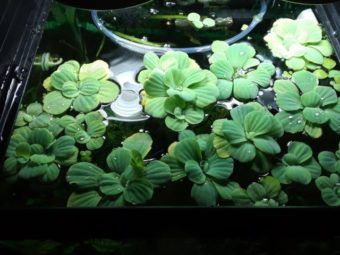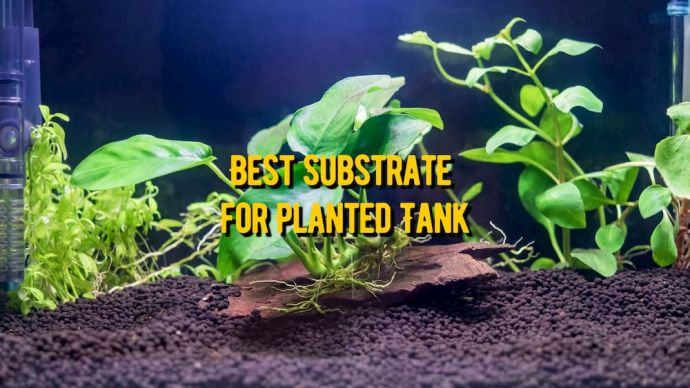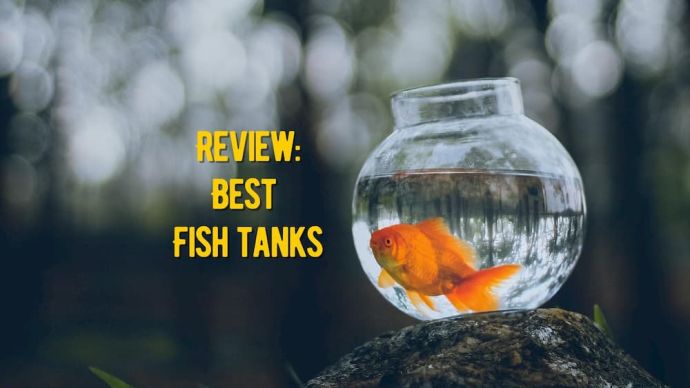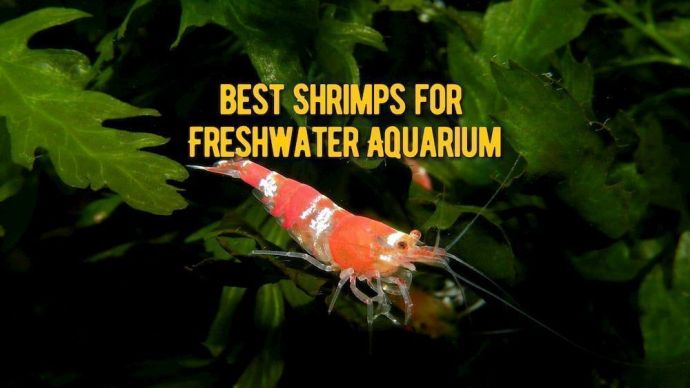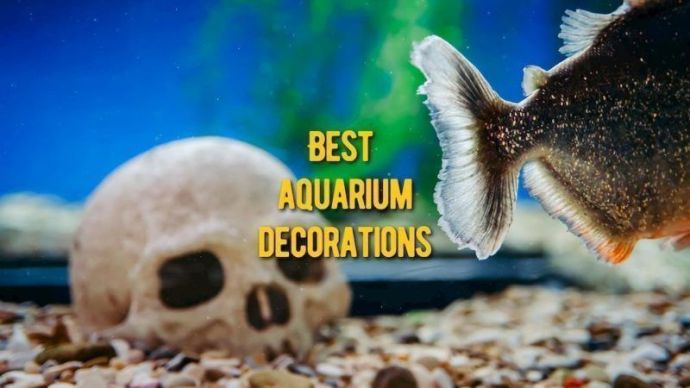The Best Floating Aquarium Plants
Written by:
Author: Vicki Smirnova
Vicki Smirnova is a professional writer and editor who adores animals and helps readers get along well with their pets. She has been working in digital media for more than 5 years and has great experience writing content about lifestyle, including pets. Vicki specializes in dog health and nutrition, cat feeding, dog training. She is an aquarium lover and is passionate to write about fish care at home. Also, Vicki headed several websites and worked as a news editor.
View all 245 articlesLearn about our editorial process and veterinary review board.
Viewed: 680
Updated on: 01/03/2022
When it comes to designing your very own aquarium, it is all about reflecting your personality and likes within a safe environment and pleasant aesthetic. While fishes are certainly an essential part of any aquascape, the best habitats will also include other life sources. While various plants can be purchased to fix the bottom of your tank, floating aquarium plants also offer a unique alternative to mix things up within your aquarium. A stunning feature to add to any tank, these plants come in all shapes, sizes, and colors, spanning from just an inch or two up to over one foot in length. In this article, we aim to shed light on everything you need to know about the best options and break down the reviews for some popular variations for sale on the market right now.
Now that you know precisely how floating aquarium plants can benefit your tank and the fish housed within, it becomes a matter of choosing which are for you. As you may expect, there are many choices on the market, with plants coming in all shapes, sizes, colors, and uses. It all comes down to your personal preference. Ask yourself what you want to achieve:
- What would be the perfectly sized plant for your aquarium?
- How much shade do you want to produce?
- What kind of style fits in well with your theme?
- What tank tech do you have in place?
- Would your fish like the plants? – for example, tropical fish will prefer plants from their natural habitat.
These are all questions you should be asking yourself. Let’s take a look at a list some top-rated on the market:
The Best Floating Plants for Aquarium Reviews
1. Duckweed
Duckweed is a free-floating plant, meaning that it cannot be tied down to one spot. However, having said that, you can use a floating plastic hoop to contain a set amount of the duckweed. It is one of the most popular choices due to its simplicity and good food source.
Duckweed can thrive in almost any environment, with the small leaves being quick growers. However, be aware that the rapid growth associated with duckweed can prevent light from reaching the fish and other plants in your tank if you add too much.
Key benefits:
- Grows quickly and can proliferate in weeks.
- A good food source for your fish.
- Provides a good level of cover/shade.
- Requires little to no care.
- Suitable for tanks that rely on low lighting.
Pros
Cons
- Can be used as a fish food source.
- Requires very little care or maintenance.
- Can thrive in a wide variety of environments.
- Can act as a shelter for baby fish.
- Not found.
2. Floating Bladderwort
It comes from the carnivorous group, although it remains a good choice for the fish community. The bladderwort often floats in groups at the surface of the water and will destroy any microorganisms in the tank, leaving the fish safe.
Once grown, the floating bladderwort will develop bright yellow flower blooms that are beautiful to look at. It gets its name from its base, which contains a series of traps that look like bladders.
Key benefits:
- Develops bright yellow blooms.
- Will destroy microorganisms.
- Is harmless to inverts and fish.
Pros
Cons
- Gets rid of any harmful microorganisms.
- Is beautiful to look at in bloom.
- Is harmless to fish.
- Carnivorous.
3. Azolla
The Azolla is also often referred to as the Mosquito Fern, and it belongs to the fern group of plants. It is usually allowed to float freely at the surface of your aquarium. One single root extends from each stem of Azolla, although the stitched look of the plant hides this fact.
The Azolla can come in a variety of colors, with some of the most popular being green and red. The Azolla is good at providing shelter for fish, but should always be trimmed to prevent them from overrunning the tank.
Key benefits:
- Belongs to the fern group.
- They come in a variety of colors.
- Give good shelter and shade to fish.
- Colors change depending on light and nutrient.
Pros
Cons
- Can be left to float freely without being secured.
- A variety of colors are available.
- Can tolerate a variety of temperatures.
- Growth can be slowed.
- A fungus is grown in hot/humid conditions.
- Easily breaks apart.
- Growth control is needed.
4. Riccia Fluitans
The Riccia Fluitans is a unique and pretty plant to look at. It is made up of short strand pieces that interlock together like a mat. The Riccia Fluitans have no leaves or roots to speak of. It is a simple grower and provides good shade, hence why it is so popular. It can also be used to recreate the appearance of moss within a tank.
Key benefits:
- Creates a freely fitting mat pattern.
- No leaves or roots.
- Shade for fry and surface breeders.
Pros
Cons
- Unique to look.
- Simple grower.
- Provides good shade.
- Can be used to create the appearance of moss.
- Can get pushed into overhead filters.
- No leaves or roots.
5. Java Moss
Java Moss is one of the most popular choices within aquarium tanks. It is difficult to kill and grow at a rapid rate, meaning that the owner must conduct very little in terms of maintenance.
It can also thrive in anything between 72 and 90 degrees Fahrenheit and any lighting condition. If allowed, it will roam freely around the surface of your tank, so it is best to secure it. The Java Moss looks fluffy and carpet-like in appearance.
Key benefits:
- One of the most popular choices.
- Grows extremely fast.
- Difficult to kill.
Pros
Cons
- Fast-growing.
- Does not die easily.
- Low maintenance.
- Compatible with most fish.
- Can thrive in a variety of conditions.
- Beautiful fluffy and soft look to it.
- Can spread and roam easily.
- Growth is hindered in warm water.
- Looks far less lush in low light.
6. Hornwort
Hornwort is widely regarded as one of the toughest floating aquarium plants on the market, meaning it is pretty easy to look after.
The Hornwort can often thrive within environments that may kill other plants, so it is so appealing. However, the product is also known to shed needles, which can cause problems within the tank.
Key benefits:
- One of the toughest types.
- It can shed needles.
- Can be grounded or left floating.
Pros
Cons
- Extremely tough and resilient.
- Can thrive in most environments.
- Easy to look after.
- Keeps algae growth under control.
- Sheds needles.
- Not great to look at under the light.
- Young fish love hiding within it.
7. Amazon Frogbit
A unique and beautiful-looking. The Amazon Frogbit has eye-catching large rosettes and long flowing roots that are sure to brighten up any tank. It is easy to grow and can withstand a variety of different temperature conditions. However, it can block light if allowed to grow and the roots have been known to block filters. We recommend that you secure it to the side of your tank.
Key benefits:
- Requires very little attention.
- Perfect for providing shady areas.
- Long branching roots.
Pros
Cons
- Beautiful and unique to look at.
- Grows very easily.
- Can thrive in a wide range of temperatures.
- Dense shade cover.
- A classic look.
- Can block your light source.
- Roots can block your filter system.
- May need to be secured to the tank.
8. Cabomba Caroliniana
In its native land of America, the Cabomba Caroliniana is known as a weed. However, it can be utilized as a great floating aquarium plant. Pale green in color, the Cabomba is trendy among those with fry and shrimp as it provides openings for smaller betta fish to shelter within. They are recommended for tanks of 1.3 gallons and above.
Key benefits:
- Natural-looking background.
- Pale green in color.
- Popular for fry and shrimp owners.
Pros
Cons
- Grows well in a variety of conditions.
- Unique pale green color.
- Survives as a floater or grounded plant.
- Ideal for shrimp.
- Might be difficult to care of for beginners.
- Not good for dimly lit tanks.
9. Red Root Floater
One of the unique floating aquarium plants out there, the Red Root Floater is surely interesting to look at. It comes from South America and gets its name from the red color seen within the base and roots of the plant. In fact, in certain conditions, the leaves have been known to turn 100% red. To achieve this, you need to expose the plant to plenty of light.
Key benefits:
- Incredibly aesthetic floating plant.
- Very easy to take care of.
- Roots and bottom of the plant are red.
Pros
Cons
- Unique striking red color.
- Can thrive in a variety of conditions.
- Easy to take care of.
- Ideal for humid environments.
- Grows fast under the correct conditions.
- Will only reach their the best under intense lighting.
- Requires an individual nutrient balance.
- Must be removed regularly.
10. Dwarf Water Lettuce
One of the most beautiful you could ever purchase. The Dwarf Water Lettuce is perfect for anyone attempting to achieve a tasteful aesthetic, with stunning curved leaves at on the surface of the water like green lilies. They are also easy to trim and maintain, which is important as the large leaves can block a lot of light if allowed.
Key benefits:
- Very pretty to look at.
- Large leaves that create shade.
- Easy to trim and maintain.
Pros
Cons
- Beautiful to look at.
- Easy to trim and maintain.
- Grows quickly and provides lots of shade.
- Easy to dispose of when needed.
- The roots fall to the bottom of the tank, providing perfect hiding spots for fish.
- Leaves can block light.
- Not ideal for small tanks.
- Absorbs lots of nutrients which can cause others in the tank to suffer.
- Must remove yellowing and dead leaves.
READ MORE: What Freshwater Fish eat Algae
Advantages and Benefits
Of course, when adding any new element to your fish tank, you should weigh the positive and negative influences it may have on the animals inhabiting the aquarium. Luckily for you, floating aquarium plants bring a whole host of advantages and benefits, both for you and your fish. The best ones will boast:
Aesthetic
If you want your aquarium to stand out against the rest, floating plants are an ideal purchase. While the vast majority of tanks will have the odd plant lurking at the very bottom of the aquarium, floating are a far more unique choice. A beautiful plant sat on the surface of the water with mysterious roots hanging down like vines in a jungle can add a new and exciting aesthetic to your tank.
Shade
Having floating water plants on the surface casts a shadow onto your tank’s base in certain areas. Supplying the perfect amount of shade to the plants on the bottom of your tank can increase their health, as long as they still have access to a light source, artificial or natural, each day. The last thing you want to do is cover the entire surface, thus robbing those below any potential growth. Not only can shade benefit the other plants in your tank, but it can also have a positive effect on the aquarium’s fish. Providing a source of shade for the fish can reveal their diverse colors and potential, offering them a place to chill away from a direct source of light.
Oxygen
One of the primary functions of any plant is to produce oxygen during the respiration cycle, and floating aquarium plants are no different. This ensures a healthy circulation of oxygen within the tank, which can benefit the fish living within. A tank with consistently high oxygen can help fight off toxins within the aquarium, toxins that can be damaging to the health of your fish. These floating plants can primarily regulate the oxygen concentration, allowing your fish to breathe healthily [1].
Filter
A floating fish tank plant can also serve as a sort of filter for your tank, evacuating all fish waste within the water. Instead of harming the fish living within the tank, a bacterium can develop on the plant instead, which often handle chemical and biological filtration well. Of course, having another source of filtration is always a good idea as the plants will only be able to retain so many chemicals before they become overwhelmed. Think of them as safeguards for your fish against any nasty diseases within the water.
Natural
These plants with hanging roots create a natural look and feel within your tank. As mentioned before, this makes the aquarium pleasant to look at. Still, it also creates a more natural feel for the fish within, matching the environment more closely to their actual habitat. This enables the fish to feel more comfortable within their setting [2].
Food
Not only do floating aquarium plants look good, but they can taste good too! In a standard fish tank, the only real food source is the substance you supply by hand, whether it be flakes, pellets, or something else. Irregular feeding patterns can cause the fish to be exposed to an infection or even starvation. You also run the risk of providing one food source that not all of your fish want to eat continuously.
However, by adding a series of them to your tank, you are also providing an additional food source. You will notice over time that a number of your fish enjoy nibbling away at the plants in question during their time in the tank. This fills their bellies, but they are also a great source of nutrition, promoting health and growth.
RELATED ARTICLE: Aquarium Plants Fertilizer
FAQ
How to Set up an Aquarium for live Freshwater Floating Plants?
When it comes to adding fish to your aquarium for the first time, you cannot simply set everything up on the day of purchasing your equipment. If you buy a tank, fill it up with water, and add the fish straight away, there is a good chance that the pets will not survive. The tank needs to go through a cycling process before it can sustain the life of a fish, meaning that the environment must first acclimatize itself. While this is true of fish, the same cannot be said for plants. This means that you can start setting up the decor aesthetic of your tank as soon as you fill it up with water. Plan out exactly how you want the tank to look, then add your decorations and life, including the floating aquarium plants of your choice[3]. Just be sure not to damage the plants when adding them to the tank. Specialist plant tools can be purchased and used in order to avoid this.
How to add Floating Plants to an Aquarium?
Adding them to your tank should be a very simple job, as it requires very little preparation. We would advise that you plan out exactly what you want your tank to look like before choosing the best one and adding them to the water. Once you have a clear idea in your head, simply take the plants and start arranging them within the tank until you are happy with your creation’s general aesthetic and feel. It can help choose plants that have the same optimum levels of PH and temperature to promote growth across the board. Once you are happy with the arrangement, ensure that your floating aquarium plants will remain exactly where you want them by using floating rings, plastic tubing, fishing wire, or something else.
How to keep Floating Plants in one place?
One of the biggest problems people face with floating aquarium plants is keeping them in one desired place. When designing your tank, chances are that you have a spot in mind for where you want the plants to stay. Unfortunately, given free rein of the tank, the floating plants will often drift wherever they want to drift. This may not seem like an issue on paper, but it can become rather troublesome if the plants get caught in your filtration systems. While this is an issue, there are a number of quick, easy, and clever fixes to keep exactly where you want them. One of the most popular techniques is to use a floating hoop or airline tubing fashioned into a ring in order to fix them in one place. Other people have been known to utilize fishing wire in order to tie the plant either to the top or bottom of the tank, ensuring that it floats in one fixed position. There is no right or wrong answer when it comes to keeping them in one place, it often just comes down to a sense of ingenuity.
How to grow Floating Aquarium Plants?
To promote growth within the floating aquarium plants yourself, you will need a light source, once strong enough to play the role of the sun[4]. Aquarium lights are easy to come by at any pet store or online, with many specifically designed to promote plant growth. Once you have the perfect light source, you should ensure that the PH level of your tank is at the optimum for growth, depending on which plants you are attempting to cultivate. Finally, ensure that the temperature of the tank ideally suits. Some may prefer room temperature, while more tropical variants may require warmer water. Many of the above grow very quickly once added to your tank. While some variants may need to be trimmed down from time to time, in general, the more they grow, the more food there is for your fish. To provide a consistent alternative in the diet of your fish, you should allow for the floating aquarium plants to grow. The only thing you should bear in mind is that you still want there to be some areas of light reaching the bottom of the tank, so do not let them grow to such an extent that they cover the entire surface. A straightforward technique is to choose a species of plant that is very easy to maintain as a food source. For example, a Duckweed plant can be consistently sprinkled into the top of your tank to provide your fish with something natural to nibble on. The vast majority of floating aquarium plants grow plentifully and quickly, so you should not have anything to worry about in that respect. Not only will the plants create a source of food, but they will also reduce nitrate levels, and promote reproduction, nourishment, comfort, and safety.
READ MORE: TOP-10 Plants for Goldfish
Article sources:
- Caraco, Nina, et al. “Vascular Plants as Engineers of Oxygen in Aquatic Systems .” BioScience | Oxford Academic, academic.oup.com/bioscience/article/56/3/219/333070.
- Edmond, Adam. “Benefits of Having Floating Aquarium Plants.” The Aquarium Guide, 26 Feb. 2020, theaquariumguide.com/articles/benefits-of-having-floating-aquarium-plants.
- “Floating Pond Plants and Aquatic Weeds .” AquaPlant, 1 May 2021, aquaplant.tamu.edu/plant-identification/category-floating-plants/.
- What Are Floating Plants: Types Of Free Floating Water Plants – Gardening Know Howg
 Fish and Aquarium Reviews The Best UV Sterilizers for Freshwater and Saltwater Aquarium
Fish and Aquarium Reviews The Best UV Sterilizers for Freshwater and Saltwater Aquarium - 259
- 0
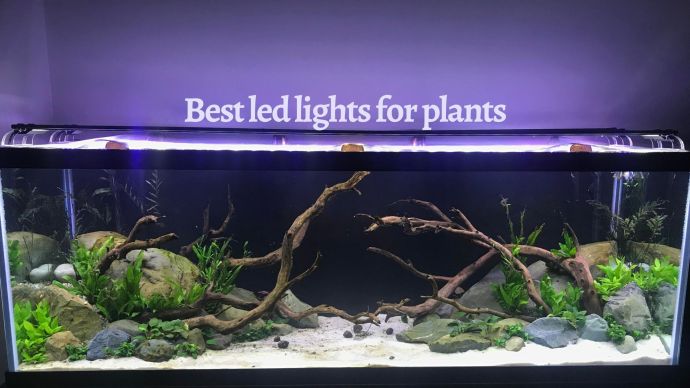 Fish and Aquarium Reviews The 10 Best LED Aquarium Lighting for Plants (Review)
Fish and Aquarium Reviews The 10 Best LED Aquarium Lighting for Plants (Review) - 1878
- 4
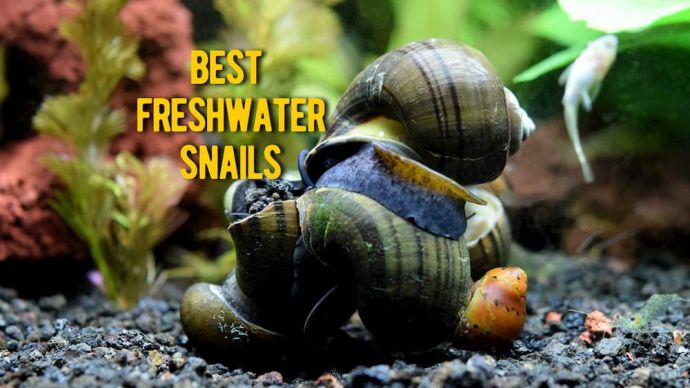 Fish and Aquarium Reviews The Best Aquarium Snails: Freshwater Aquarium Snails Review
Fish and Aquarium Reviews The Best Aquarium Snails: Freshwater Aquarium Snails Review - 367
- 0
 Dog Products & Toys Reviews The 10 Best Brush for Australian Shepherd: Review and Buying Guide
Dog Products & Toys Reviews The 10 Best Brush for Australian Shepherd: Review and Buying Guide - 13077
- 0









